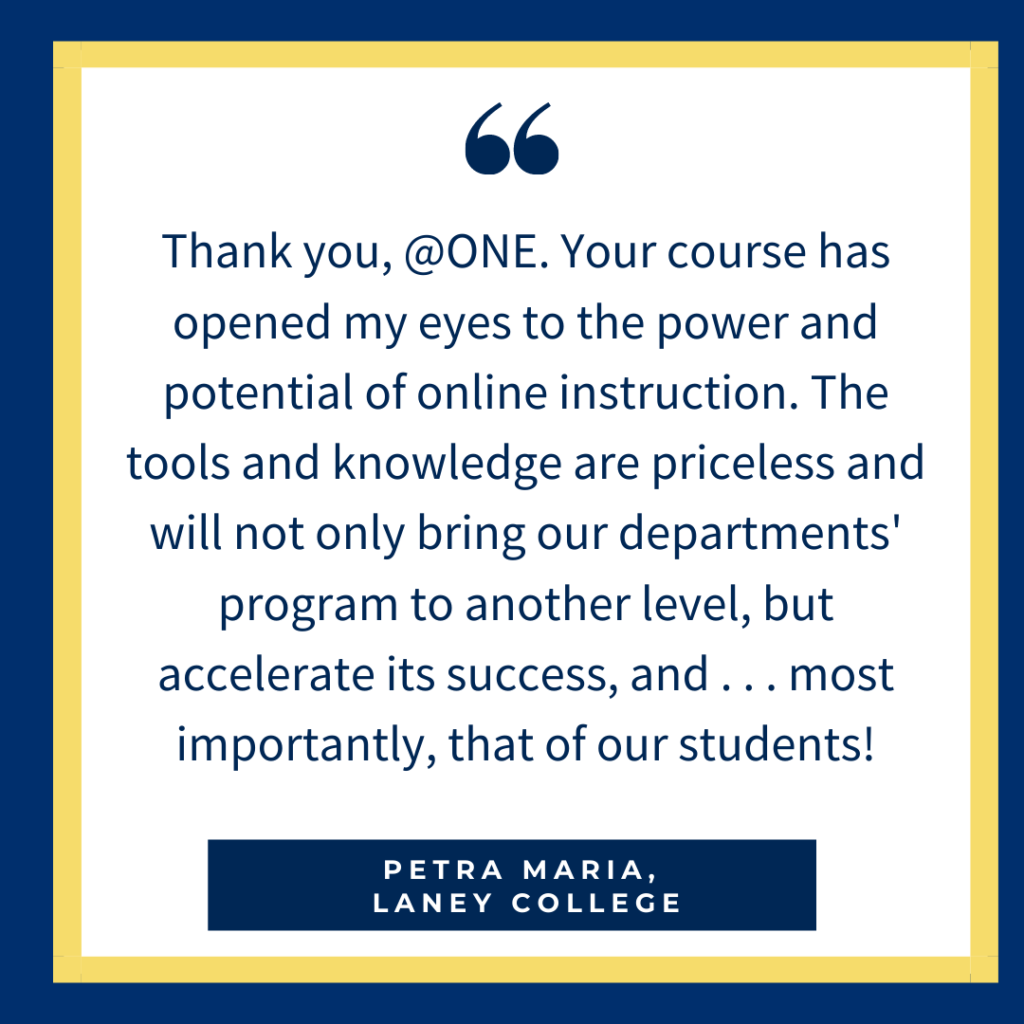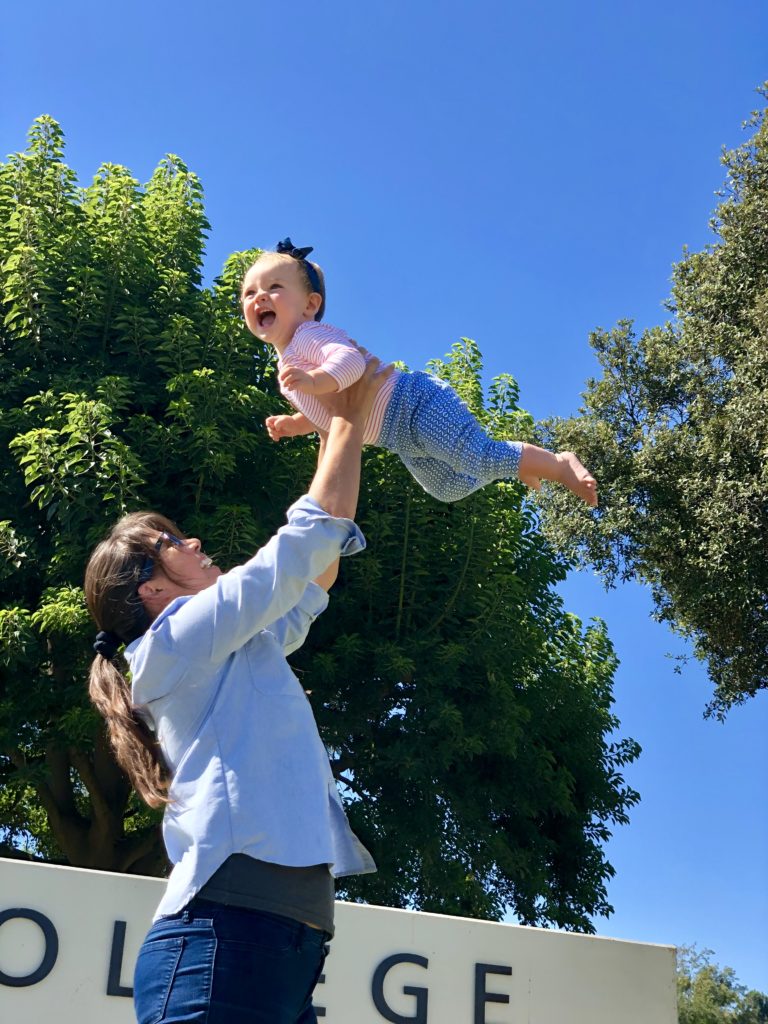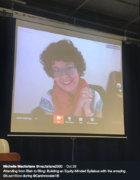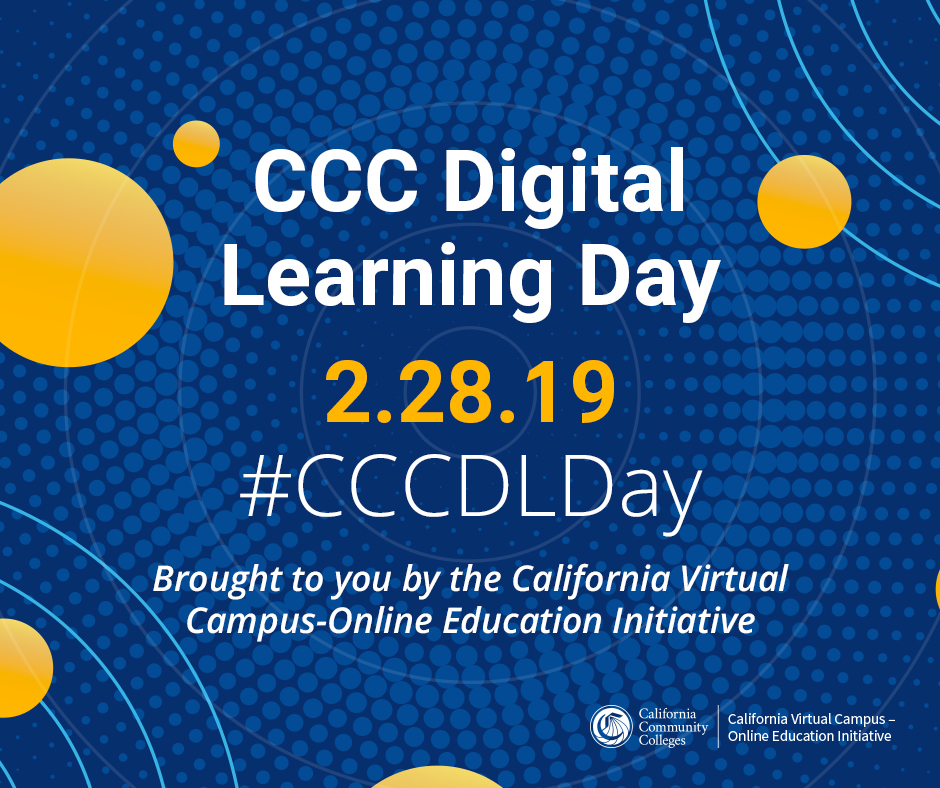Dialing Up the Quality & Inclusivity of Live Online Classes
I already knew long lecture videos are a bad way to fill an hour of synchronous instruction, but this course showed very specifically how to break things up into manageable segments of interaction, instruction, and active *participatory* learning regardless of camera-on status!
– Cynthia Hamlett, Distance Education Faculty Lead, Crafton Hills College
For decades, asynchronous online courses have been the gold standard for increasing access to higher education for students who have traditionally been left out. Prior to COVID, 28% of California Community College's 2.2 million students took at least one online course (CCC Chancellor's Office, 2017). But we know that access does not equal quality. In fact, known equity gaps in face-to-face courses have been exacerbated by online courses. To improve this problem, a system and institutional commitment to providing high-quality professional development in online course design and teaching is paramount.
Every teaching modality presents both opportunities and challenges for faculty and students. When COVID surfaced one year ago, faculty across the nation scanned their digital toolkits and recognized that videoconferencing could provide an option for a digital classroom environment. As classrooms were shutdown, Zooming became part of teaching vernacular and the inequities that synchronous online instruction created for students quickly began to be recognized. Karen Costa's powerful piece, Cameras Be Damned, opened our eyes to how enabling a webcam can be a trauma trigger for students, as well as faculty. Megan Corieri, a California community college student, shared this advice with faculty in Spring 2020 article, "There have been many times that I have had to shut my camera off in class, have a good cry, and come back. We are living through unprecedented times, and now more than ever it is important to have empathy, kindness, and patience." While video conference serves as a helpful scaffold for many, it comes with a high price for others. Zoom can place an extra tax on one's already strained mental health, not to mention the inequities associated with device ownership and network access. Today, community college educators recognize the need to support the whole student more than ever.
New Course: Introduction to Live Online Teaching & Learning
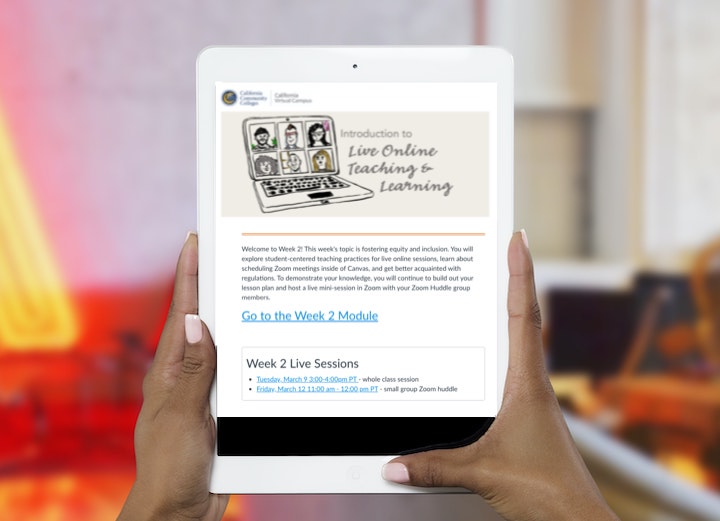
This is precisely why professional development is critical to guide faculty through the twists and turns of our dynamic instructional landscape. This month, in response to this emerging need, CVC/@ONE introduced its newest professional development course, Introduction to Live Online Teaching & Learning, a 2-week, facilitated course available to California Community College faculty and staff at the low cost of $45 with the option to receive one continuing education unit for an additional fee.
In the course, participants are immersed in the role of a student as they experience instruction that models the effective use of Canvas and Zoom to support learning at a distance. Participants work independently and in small group Zoom "huddles" to learn how to design and teach effective, inclusive live sessions with an ice breaker to check the emotional pulse of students or help them make connections with peers, direct instruction using screensharing, and active learning techniques using chat, polling, breakout rooms, and external tools like Google Docs, Slides, and Jamboard. Participants also engage in live class sessions in the role of "students" that model inclusive instructional practices. In one session, they participate in a lesson in empathy that requires them to complete a collaborative activity in a Zoom breakout room while attending from a smartphone. In the United States, Black and Hispanic adults are more likely to be smartphone dependent. When teaching at an open-access institution, teaching practices must be mobile-friendly to avoid perpetuating equity gaps.
Upon completion of the course, participants receive a digital badge that verifies their new skills. The two sections we scheduled for the spring are full ... but don't worry. We'll be offering more sections of the course this summer!
Adopt the Course!
Like all of CVC/@ONE's other professional development courses, we have shared our new Intro to Live Online Teaching & Learning course in the Canvas Commons with a CC-BY license, making it simple for your college to adopt, adapt, and offer the course locally for your faculty. To ensure the quality of your own local PD, we strongly advise that the local facilitator of an adopted course complete the course with us first. In your re-use of the course materials, please attribute California Community Colleges | California Virtual College. Sharing really is caring!
To adopt the new Live Online Teaching & Learning Course, go to the Canvas Commons and search for "CVC Adoptable." That will lead you to all of our adoptable courses.
If there's one thing we've learned from COVID, it is that effective, inclusive design and teaching are central to serving the needs of all students ... regardless of the modality of instruction.
We'd like to extend a special thank you to Francine Van Meter of Cabrillo College who contributed her expertise to the development of this new course. Francine will be retiring from our system in May and has left a tremendous legacy in distance education. You will be missed, Francine!

